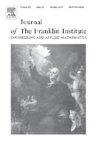IF 3.7
3区 计算机科学
Q2 AUTOMATION & CONTROL SYSTEMS
Journal of The Franklin Institute-engineering and Applied Mathematics
Pub Date : 2025-04-01
DOI:10.1016/j.jfranklin.2025.107655
引用次数: 0
摘要
努斯鲍姆函数已被广泛应用于具有未知控制方向的动态系统的控制设计中,这种方法已被扩展用于处理非线性系统的输入约束。虽然已有多项研究采用了这种表述方法来处理一般动态模型中的系统约束,但我们证明,现有的理论框架需要一个以前未说明的关键假设:指令控制信号的有界性。这一发现对该方法的实际应用具有重要影响。因此,该方法的一个众所周知的替代方法,即修正跟踪误差法(MTE),与努斯鲍姆函数法在解决输入约束时所需要的理论假设相同,可以更有效、更简单地解决这一问题,尤其是在不确定动态系统的情况下。我们将这一分析扩展到具有死区非线性的系统,在这种系统中,MTE 方法因其通过辅助状态变量的内在补偿机制而表现出更优越的性能。通过对这些控制方案进行广泛比较,我们说明了每种方法在受限动态系统中的局限性和能力。结果表明,尽管 Nussbaum 函数方法更为复杂,但与 MTE 方法相比并无优势,而后者即使在存在输入约束和死区非线性的情况下也能有效识别模型的不确定性。本文章由计算机程序翻译,如有差异,请以英文原文为准。
On the application of Nussbaum function to the control of constrained nonlinear systems
Nussbaum functions have been widely employed in control design for dynamic systems with unknown control direction, and this approach has been extended to handle input constraints for nonlinear systems. While several studies have adopted this formulation to address system constraints in generic dynamic models, we demonstrate that the existing theoretical framework requires a critical, previously unstated assumption: the boundedness of the commanded control signal. This revelation has significant implications for the method’s practical applicability. Thus, it is shown that a well-known alternative to this method, i.e., the Modified Tracking Error (MTE), which necessitates the same theoretical assumptions as that of the Nussbaum function method to tackle input constraints, can be a more effective and simpler option to deal with this issue, particularly in the case of uncertain dynamic systems. We extend this analysis to systems with dead-zone nonlinearities, where the MTE method demonstrates superior performance due to its inherent compensation mechanism through the auxiliary state variable. Through extensive comparisons between these control schemes, we illustrate the limitations and capabilities of each method in the case of constrained dynamic systems. The results highlight that despite being more complicated, the Nussbaum function method does not provide advantages over the MTE approach, while the latter enables effective identification of model uncertainties even in the presence of input constraints and dead-zone nonlinearities.
求助全文
通过发布文献求助,成功后即可免费获取论文全文。
去求助
来源期刊
CiteScore
7.30
自引率
14.60%
发文量
586
审稿时长
6.9 months
期刊介绍:
The Journal of The Franklin Institute has an established reputation for publishing high-quality papers in the field of engineering and applied mathematics. Its current focus is on control systems, complex networks and dynamic systems, signal processing and communications and their applications. All submitted papers are peer-reviewed. The Journal will publish original research papers and research review papers of substance. Papers and special focus issues are judged upon possible lasting value, which has been and continues to be the strength of the Journal of The Franklin Institute.

 求助内容:
求助内容: 应助结果提醒方式:
应助结果提醒方式:


